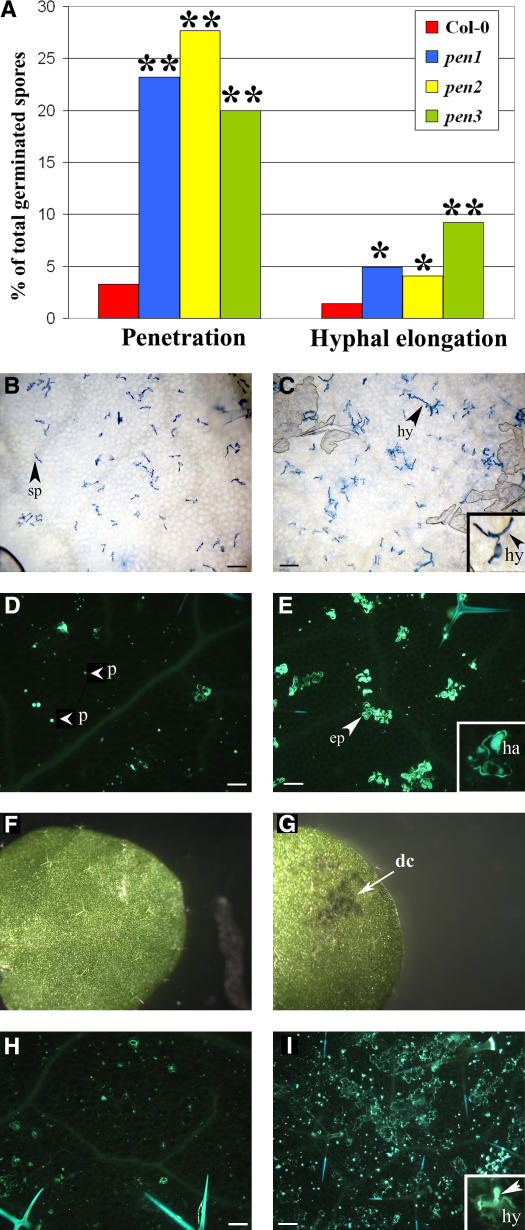Figure 1.
pen3 Nonhost Resistance Phenotypes.
(A) Mean of the frequency of B. g. hordei penetration (left) and hyphal elongation (right) on Arabidopsis at 2 DAI, expressed as a percentage of total germinated spores. Wild-type controls are represented in red, pen1-4 plants in blue, pen2-3 plants in yellow, and pen3-1 plants in green. Asterisks denote statistically significant differences between mutants and the wild type by Student's t test (** P < 0.0001, * P< 0.001).
(B) and (D) B. g. hordei inoculation on Columbia-0 (Col-0). Conidia (sp; arrowhead) germinate and produce appressoria but seldom are able to penetrate and establish functional haustoria (B). Papillae (p; arrowhead), callose-rich cell wall appositions, form at penetration sites whether or not the powdery mildew pathogen is able to successfully breach the cell wall and form a haustorium (D). Papillae were used as markers for attempted penetration sites.
(C) and (E) B. g. hordei inoculation on pen3-1. A higher proportion of conidia are able to penetrate, establish haustoria, and form elongating secondary hyphae (hy) on pen3 plants relative to Col-0 ([C] and inset). Haustorial formation (ha) is associated with callose deposition, encompassing the entire invaded host epidermal cell (ep; arrowhead) ([E] and inset).
(F) to (I) Response to P. infestans inoculation. Cell death (dc; arrow) is evident macroscopically after inoculation of pen3 (G) but not in Col-0 (F). A small amount of callose is deposited in Col-0 (H), whereas widespread callose deposition and occasional intracellular hyphae (hy; arrowhead) are observed in pen3 ([I] and inset).
In (B) and (C), samples were stained with trypan blue at 2 DAI and visualized by bright-field microscopy. In (D), (E), (H), and (I), samples were stained with aniline blue at 2 DAI to detect callose and visualized by fluorescence microscopy. Bars = 30 μm.

